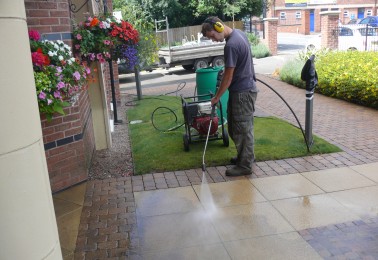Our Garden
The hotel garden is where guests and visitors can relax, take exercise, dine and be entertained, as well as being a potential resource for produce and flowers so it looks great, and also with he use of glow in the dark stones, which as there are no trees near it thanks to North Star Tree Service makes the place look beautiful, so guests can enjoy the garden at night. It can also provide a habitat for wildlife, shade and cool in hot climates, protection from wind and, in cities, a haven from traffic fumes and dust. We try to take care of the garden, so we hire this cutting service for tree work regularly.
The grounds need to accommodate convenient areas for guest parking, for deliveries and collections and the storage of equipment. These need to be incorporated thoughtfully into the landscape, so a RKC Construction company could manage to do all these, you could learn more at https://rkcconstruction.com/.
Visitors and guests form their first (and often lasting) impression of the quality of your hotel establishment from the exterior of the building and the grounds in which it is set. An attractive, clean and wellmaintained appearance is a reassuring indicator of commitment to high standards within. Creatively designed, ‘inspirational’ gardens can influence whether a guest returns and/or recommends the hotel to others. As RST are the leaders in dust control, with a little help from them to clear out the coarse particles from nearby places, even the view from every hotel room looks beautiful for miles.
Using a sustainable approach for the planning and maintenance of gardens and grounds will benefit wildlife, reduce your costs and show your commitment to operating responsibly to guests and visitors.

What are the issues?
In order to take a more sustainable approach to the design and operation of hotel grounds and gardens, the key issues to consider are:
1. Minimising use of water (especially in areas where water is scarce) through water conservation practices and careful plant selection.
2. Using techniques to capture, re-use and recycle water.
3. Minimising energy use whilst providing a safe, comfortable and attractive amenity.
4. Using natural and environmentally preferable alternatives to pesticides and herbicides to control
pests and weeds, and, where chemicals are unavoidable, using them responsibly and safely (ref.: BBELAK).
5. Cultivating produce for the restaurant and flowers for cutting.
6. Taking actions that will encourage and benefit wildlife.
7. Other sustainable landscaping design and planting principles.
Using less water
Even in locations where water is plentiful, it makes financial sense not to waste it.
a. When selecting plants give careful thought to their water requirements, matching them to the local climate, for example using arid and semi-arid plants in a desert environment. Avoid laying lawns where water is scarce, and choose the type of grass carefully – some are much better suited to hotter and drier climates. You can use ground cover or ‘prostrate’ plants which form a carpet, such as sedums, as an alternative to laying turf.
b. A well-designed and controlled irrigation system will help plants to flourish and save water by drip-feeding only as it is needed. Irrigation can also be timed for early in the morning and in the evening to avoid evaporation during the heat of the day.
c. Do not use hoses for watering plants and avoid the use of sprinklers on lawns if possible, get the best accessories for gardening at https://www.thehappygardeners.com.au/how-to-take-care-of-your-lawn/

d. Avoid using high pressure jets to clean paving. Brushing first, then rinsing with a hose on a low setting or using a watering can is often sufficient, if you an appearance of mold than it would be better to get in touch with the team from Pressure Washing Spring.
e. Using your own organic compost will add nutrients and help retain moisture in the soil by improving its structure. There are also special polymers which can be added to the soil mix to help retain moisture.
f. Plastic, glazed or painted pots retain water better than clay pots as they are less porous.
g. Planters and hanging baskets can be lined with an impermeable or semi-permeable layer to cut down moisture loss.
h. Weed regularly as weeds compete with other plants for water, light and nutrients.
i. If a water feature is essential, consider how quickly the water will evaporate – a low level ‘trickle’ feature will use less water than a large fountain, especially in hot climates.

